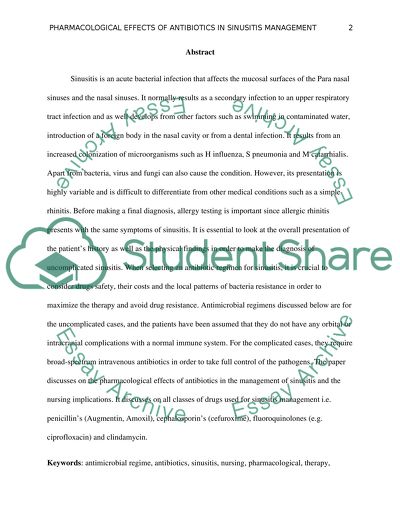Cite this document
(“Pharmacological Effects of Antibiotics in Management of Sinusitis and Research Paper”, n.d.)
Retrieved from https://studentshare.org/nursing/1667306-pharmacological-effects-of-antibiotics-in-management-of-sinusitis-and-the-nursing-implications
Retrieved from https://studentshare.org/nursing/1667306-pharmacological-effects-of-antibiotics-in-management-of-sinusitis-and-the-nursing-implications
(Pharmacological Effects of Antibiotics in Management of Sinusitis and Research Paper)
https://studentshare.org/nursing/1667306-pharmacological-effects-of-antibiotics-in-management-of-sinusitis-and-the-nursing-implications.
https://studentshare.org/nursing/1667306-pharmacological-effects-of-antibiotics-in-management-of-sinusitis-and-the-nursing-implications.
“Pharmacological Effects of Antibiotics in Management of Sinusitis and Research Paper”, n.d. https://studentshare.org/nursing/1667306-pharmacological-effects-of-antibiotics-in-management-of-sinusitis-and-the-nursing-implications.


